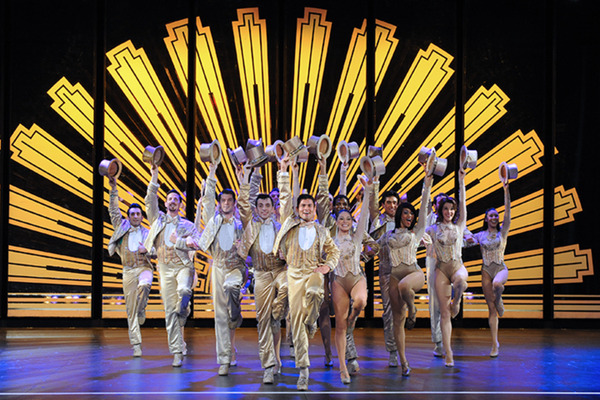Perform musical theater
Create and rehearse a short musical theater scene with singing, acting, simple choreography, and basic costumes or props to learn teamwork and performance skills.



Step-by-step guide to perform a short musical theater scene
4 Steps: Beginner Musical Theater Dance - Part 1
Step 1
Gather your team of friends or family to help put on the musical scene.
Step 2
Pick a fun story or theme that you want to turn into a short musical scene.
Step 3
Choose who will play each character and assign the roles clearly.
Step 4
Pick a short song or make a simple melody to sing during the scene.
Step 5
Write a one-paragraph outline that explains what happens from start to finish.
Step 6
Write two to four short lines of dialogue for each character.
Step 7
Create two to four simple choreography moves and decide where they happen on the stage space.
Step 8
Choose one costume piece and one prop for every character from your materials.
Step 9
Use paper pencil and coloring materials to make or decorate the chosen costumes and props.
Step 10
Rehearse the spoken lines together slowly until everyone knows their parts.
Step 11
Practice the singing while doing the choreography slowly until it feels smooth.
Step 12
Do a full run-through in costume with props and treat it like the real performance.
Step 13
Make one small change to improve the scene based on how the run-through felt.
Step 14
Share your finished creation on DIY.org
Final steps
You're almost there! Complete all the steps, bring your creation to life, post it, and conquer the challenge!


Help!?
What can we use if we don't have the paper, pencil, or coloring materials to make costumes and props?
If you don't have paper, pencil, or coloring materials, use old magazines, fabric scraps, sticker labels, and cardboard to make or decorate the chosen costumes and props.
What should we do if actors keep forgetting lines or the choreography falls apart during the run-through?
If actors forget lines or choreography during rehearsals or the full run-through, tape index-card prompts of each character's two-to-four short lines to their costume, rehearse the spoken lines together slowly until everyone knows their parts, and practice the singing while doing the choreography slowly until it feels smooth.
How can we adapt this activity for different ages?
For younger children, simplify to one short song, give each child one costume piece, one prop, and only one or two short lines with one or two simple choreography moves, while older kids can expand the one-paragraph outline into multiple scenes, add harmonies, and create more detailed choreography and props.
How can we extend or personalize the musical scene after the first run-through?
To enhance the scene, build a small cardboard set decorated with your coloring materials, record the full run-through on a phone to spot improvements, make the one small change to improve the scene, and then upload the polished performance to DIY.org.
Watch videos on how to perform a short musical theater scene
Artemis Online: Junior Musical Theatre Dance with Holly, Grace and Amber! 'One Short Day'
Facts about musical theater for kids
🕺 Choreographers often teach dance in 8-counts (1–8) to keep large groups moving together like a team.
👗 Costume designers use clever tricks (Velcro, elastic, quick seams) so actors can change outfits fast during a show.
🤝 Rehearsals are teamwork practice: listening, trusting partners, and sharing roles are as important as the songs and steps.
🎼 Singing regularly can improve breath control, posture, and confidence — performers use their breath like a musical engine.
🎭 The Phantom of the Opera is Broadway's longest-running musical with over 13,000 performances — some shows can run for decades!
How do you create and rehearse a short musical theater scene with singing, acting, choreography, and simple costumes or props?
What materials do I need for a child’s musical theater scene activity?
What ages are suitable for performing and rehearsing a short musical theater scene?
What are the benefits of creating and performing a short musical theater scene for kids?


One subscription, many ways to play and learn.
Only $6.99 after trial. No credit card required


